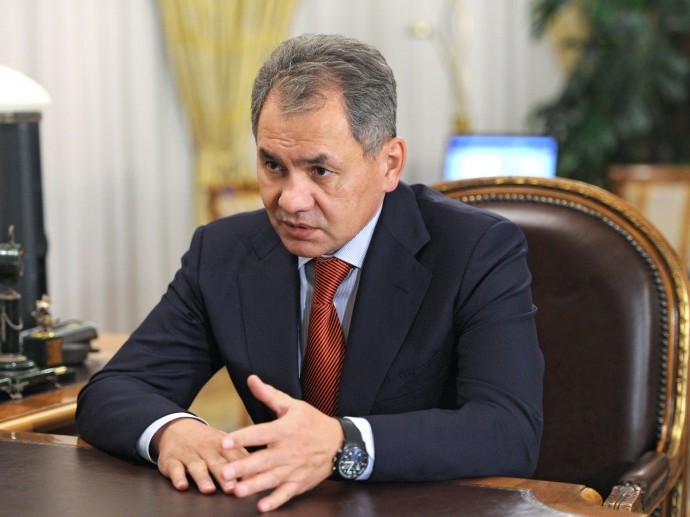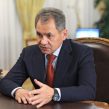
Russia’s Post–‘New Look’ Army: Corrupt Aging Officers Welcome
Publication: Eurasia Daily Monitor Volume: 10 Issue: 140
By:

As the hullabaloo died down after staging a military exercise in the Russian Far East on July 13–20, senior officials soon acknowledged underlying systemic weaknesses within the Armed Forces. Commentators noted the massive scale of the so-called “snap inspection,” which included 160,000 personnel, involving five combined-arms armies and the Pacific Fleet (see EDM, July 23). Aleksandr Sladkov referred to the baobab tropical tree known for its size as a metaphor for the exercise in which forces drawn from Central Military District (MD) participated as the “blue” side, or the hypothetical enemy (https://nvo.ng.ru/realty/2013-07-26/1_baobab.html). The backslapping abated by July 23 as Defense Minister Army-General Sergei Shoigu briefed President Vladimir Putin on the lessons being evaluated from the exercise.
Shoigu praised the absence of accidents during the exercise and offered more detail on the movement of troops and supplies across large distances, confirming that the testing of strategic mobility played a key role in the exercise. Turning to issues that were “discovered” during the inspection of the Armed Forces’ units assigned to the exercise, Shoigu was more critical. He highlighted two major phases that Putin observed during which time not all crews could fire “professionally enough.” Shoigu reinforced this observation by explaining that it did not result from a lack of interest among servicemen to learn, but stems from low training allowances for expendable ammunition. He added that it was “less than twenty [rounds]” for tankers, a similar figure for artillerymen and motorized riflemen, lamenting that these figures were so low. On this basis Shoigu intends to request a recalibration of existing allowances for expendable ammunition by “many times,” in order to improve readiness levels (https://kremlin.ru/news/18873).
Proceeding to the use of large amounts of aviation, including transporters, during the exercise, Shoigu reminded Putin of their discussions in Sochi in May of this year about restructuring the Air Force and adding a number of new airfields—especially in the Russian Far East. Since the exercise had tested the capacity of air lines of communication, Shoigu concluded that additional airfields will be needed in the future for refueling and servicing. The Air Force as well as Transport Aviation are evidently now earmarked for further changes to their structure and composition; some would argue this only represents a refinement from the previous restructuring under Anatoly Serdyukov, but the drivers are now clearly very different (https://kremlin.ru/news/18873).
Shoigu used his after-action reporting to the president to highlight a sensitive manpower issue: the presence of large numbers of 12-month serving conscripts within the Armed Forces. He noted that “sophisticated” equipment and arms are appearing in the military, which means that “we need to revise the entire structure of positions in which servicemen called up under contract must serve exclusively.” Shoigu concluded that “a conscript who serves with us for a year is incapable of mastering those professions required today in working with sophisticated systems, and more and more [such systems] will be coming to us each year. Therefore, I believe that before the end of this year we will prepare a complete list of positions where contract personnel will serve exclusively and a complete list of where conscripts will serve exclusively. I believe all this naturally will be shown by our calculations, and our figures of 425,000 contract personnel and more than 30,000 [sic] conscripts can change” (https://kremlin.ru/news/18873). This is important for three reasons: it confirms the displacement of previous manpower planning, portends further recasting of such plans and demonstrates that the defense plan of activities to 2020 published in early July is already dated—the final target figure of 425,000 contract personnel itself will be reconsidered. But, more importantly, even when the defense minister admits that such conscripts cannot master sophisticated weapons and equipment, he cannot bring himself to contemplate their complete removal and transition to a fully professional military.
Yet, the real baobab tree in the Russian defense establishment is corruption, which eclipses even its largest showcase exercises. On July 25, the Western MD prosecutor’s office alleged that corruption has increased 11-fold year-on-year. “Corruption crime has this year caused over 1.7 billion rubles’ [$53.1 million] worth of material damage, which represents an 11-fold increase on the same period last year,” according to a statement by the military prosecutor’s office in the Western MD. Since early 2013, 520 violations were recorded concerning the rules governing officials submitting information on their income or assets. Moreover, 26 criminal cases were opened, linked to the employees of conscription offices [military commissariats] in the first six months of the year. There have also been 84 violations of the legislation concerning the state defense order in 2013 (Interfax, July 25).
In this context the depth of the problems in Russia’s military structures were underscored by a recent perplexing initiative by the defense ministry. Deputy Defense Minister Nikolai Pankov, explained that the defense ministry had drafted a bill to increase the age limit for military service by five years. If the proposals succeed, the age limit for lieutenant-colonels will be raised to 50 years, colonels and captains 1st rank up to 55 years, major-general, lieutenant-general, rear admiral and vice-admiral up to 60 years, and the colonel-generals, army-generals, marshals and admiral of the fleet up to 65 years. According to Pankov these proposals were drawn up and circulated among the other power ministries and include plans to offer personnel free vacation travel (https://www.rg.ru/2013/07/25/voennye.html). Nonetheless, such efforts to raise the age limit for military service are in stark contrast with the previous defense ministry leadership, as Serdyukov made a point of trying to shift generals reaching retirement age. Raising the numbers of senior officers serving longer will certainly not prove conducive to military transformation.
Imminent changes to the allowances for expendable ammunition, Air Force restructuring and adding additional airfields to boost combat service support pales in comparison with Shoigu admitting how useless the 12-month serving conscripts are for the military. Some of these changes were certainly under discussion prior to the exercise in the Far East, but the “evidence” can now be offered to Putin to build the case for fresh change. Nevertheless, Shoigu has still to understand that the Army is a conservative organization, led by tankists, many of whom are devoutly corrupt, while very few support real transformation.




